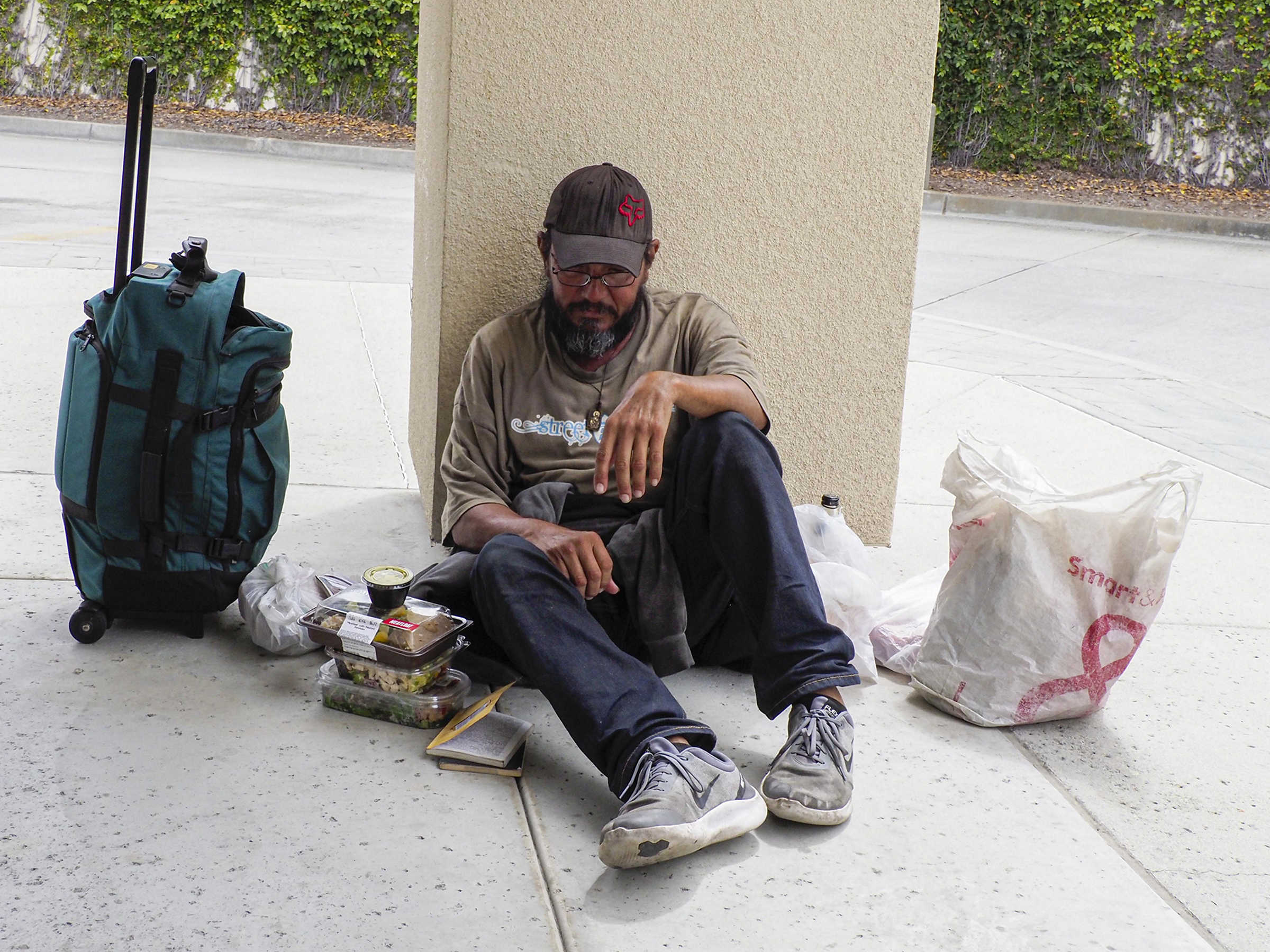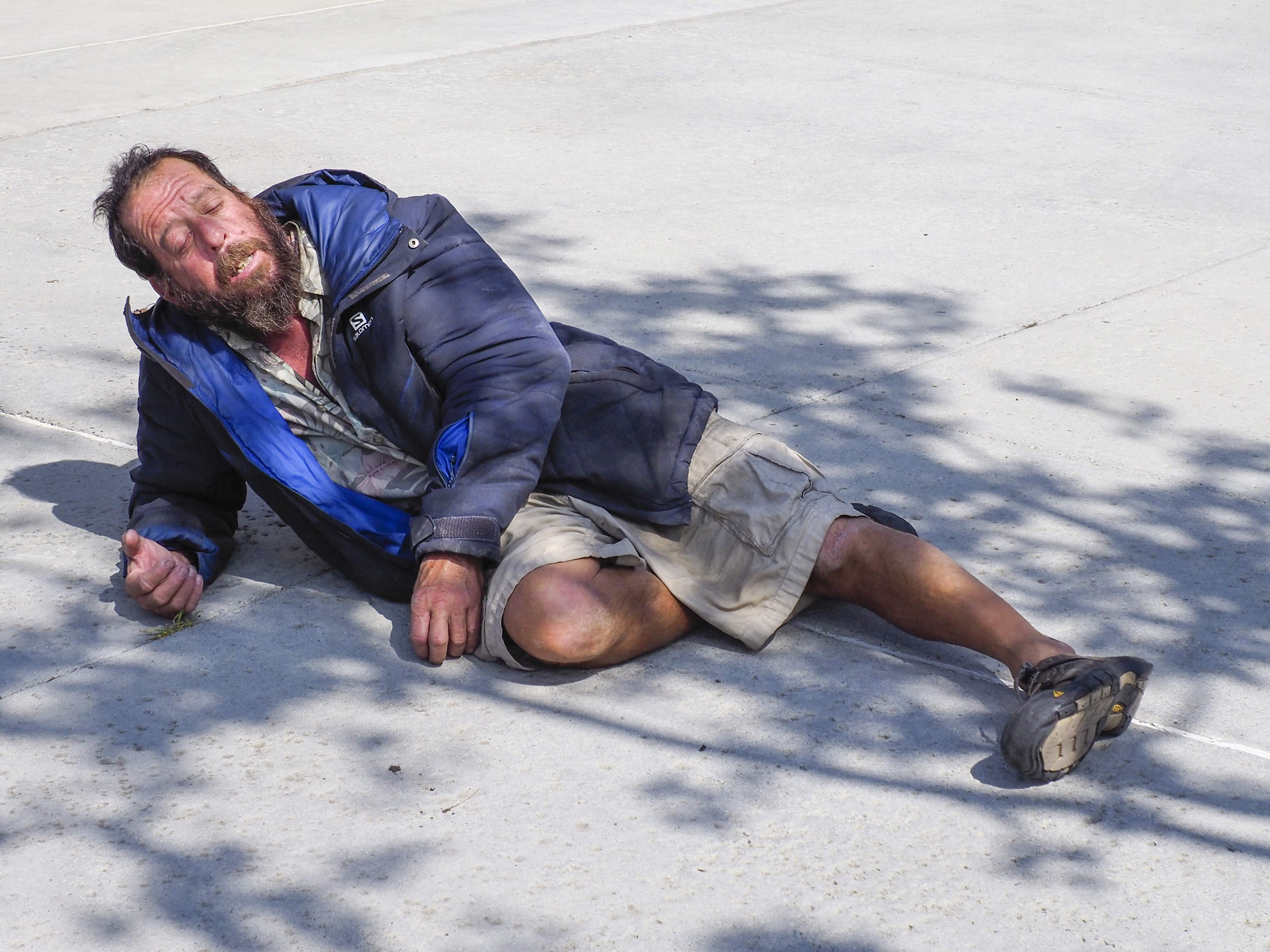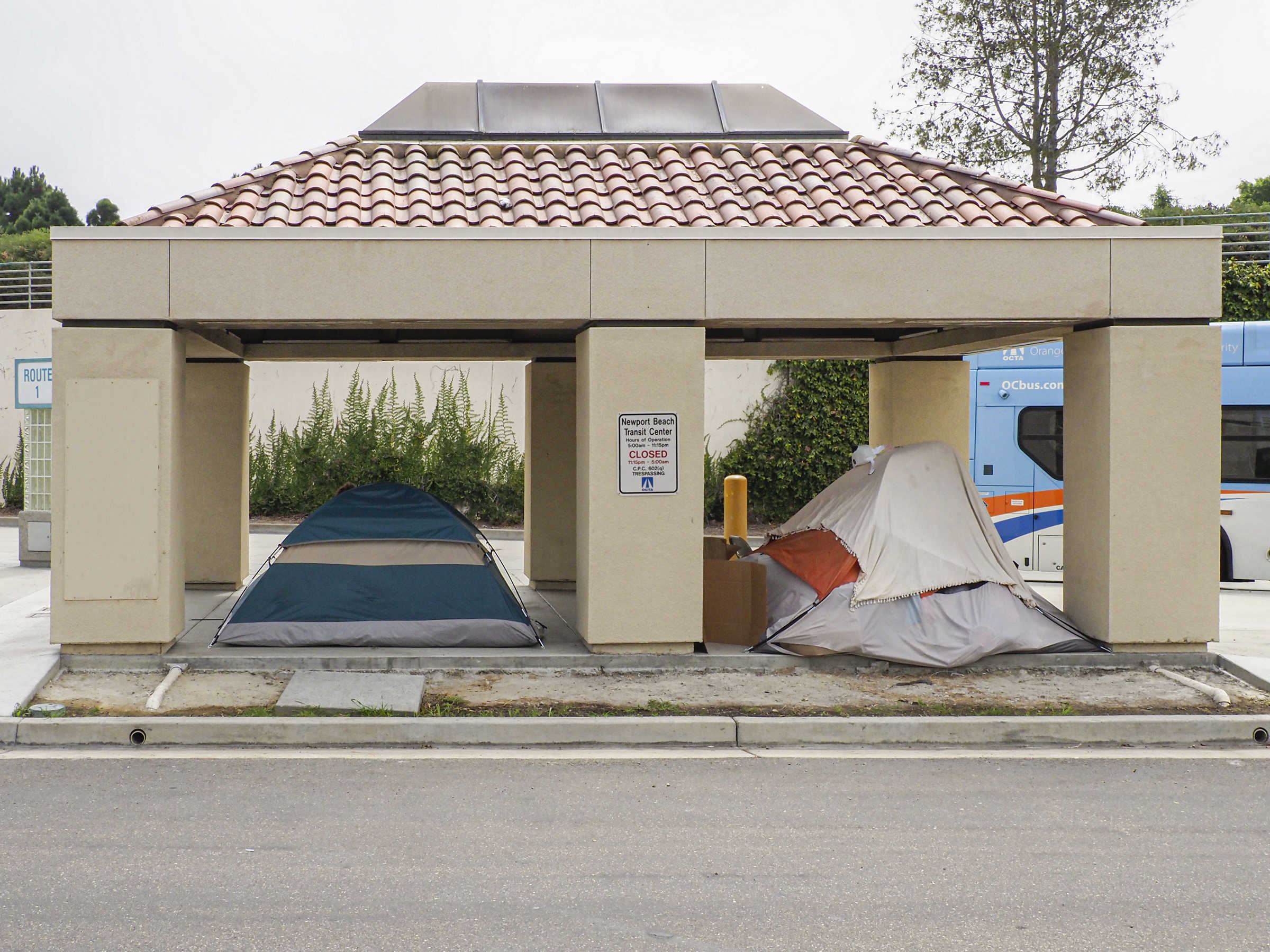
— Photo by Lawrence Sherwin ©
Addressing the “cost of homelessness” during a presentation Tuesday, officials found that it’s more economical to provide housing and services than keeping people on the streets.
About two dozen people attended the Newport Beach Homeless Task Force Committee meeting, held in Council chambers at the Civic Center.
Committee member David Snow gave the presentation. Snow, Ph.D., is a professor of sociology at the University of California, Irvine, and led the Orange County United Way study on the cost of homelessness.
Officials estimate that approximately $299 million was spent to address homelessness in Orange County by governmental and non-governmental entities in a 12-month period between 2014-15.
“And that’s a conservative estimate,” Snow said.
Municipalities account for the largest share of this total (about $120 million), followed by hospitals ($77 million), county ($62 million), non-governmental housing agencies ($35 million), other non-governmental agencies servicing the homeless ($5 million with incomplete data).
Across the major service clusters (health care, housing, and criminal justice), officials estimate that approximately $121 million was spent providing health care to the during that time period. Counties, municipalities and non-governmental agencies spent approximately $106 million on all types of housing for the homeless, and an estimated $23 million was spent on criminal justice contacts (police/jail/prison).
Costs for services for those who are chronically homeless are 50 percent lower per person per year when people are housed versus living on the streets ($51,587 versus $100,759).
Chronic homeless, when housed, have about 78 percent fewer ambulance rides, nearly 100 percent fewer tickets, and 100 percent fewer arrests, Snow reported.

— Photo by Lawrence Sherwin ©
For example, members of the homeless population typically get ticketed for camping in public places, drinking in public, possession of an open container, eliminating in public places, and loitering, Snow explained.
They get ticketed, they are required to pay a fine, which they are unable to do, so they get ticketed again, Snow explained.
“All that diminishes when they’re housed,” and they don’t get ticketed in the first place, Snow said.
Taking into consideration the average cost of services per capita, officials estimate a cost savings of approximately $42 million per year if all Orange County chronically homeless were placed into permanent supportive housing.
The potential cost savings of housing the homeless are even more significant for the chronically homeless who are the heaviest service users, and in particular for those in the upper decile of costs. The study found that 10 percent of the chronically street homeless incur annual costs higher than $439,787 per person, whereas the “most costly” 10 percent of those in permanent supportive housing incur annual costs in excess of only $55,332.
Some figures have estimated anywhere between about $20,000 to $56,000 per bed, per year (including food, outreach, supportive help, facility staffing, etc.). Once the shelter is in place, the county can step in and help mitigate the costs, Committee member John Heffernan said.
People who are successfully being moved into permanent housing are not rotating back out onto the street and into the homeless population, which is even costlier to the city and county, Committee member and Councilwoman Joy Brenner noted.
“So, the temporary shelter is more expensive, certainly, but the outcome, if it’s positive, certainly pays off,” Brenner said.
The study questioned what the cost of homelessness in comparison to various housing options, Snow explained. When the results of the study came out a lot of “ears perked up” on the county level, he noted.
“However one feels about the homeless and the issue of homelessness, you can argue to do X, Y, or Z, on moral or humanitarian grounds,” Snow continued, “but we also know what often moves the dial, it’s when you can show on economic grounds what kind of difference you can make.”
Now people know what a difference this type of study can make, Snow commented.
“We know from the cost study that the cost of homelessness decreases markedly with the provision of housing, and this cost reduction is the most pronounced for the chronic homeless,” according to Snow’s presentation. “We also know that many of the troublesome issues associated with homelessness disappear or diminish markedly with the provision of housing.”

— Photo by Lawrence Sherwin ©
“So… we might ask ourselves, why not housing now?” Snow questioned.
A speaker during public comment questioned what the person would do at the shelter, possibly sitting around all day
“They don’t contribute, they don’t earn, they don’t provide for themselves,” she said.
Residents don’t want people using drugs or drinking, or loitering or intimidating others, while they are back out on the street during the day, she added.
Another speaker commented that homeless individuals fill up the hospital emergency rooms. She claimed to know ER nurses at Hoag Hospital who have quit because they “didn’t sign on” to have the entire emergency room filled up with homeless people needing services, she said.
“When (your family has a medical emergency) and you can’t get into the Hoag emergency room because it’s completely filled up with people that need help, you’re going to change your tune about some things,” she said.
She also mentioned the theft at businesses and the strain on local police. These are other economic impacts that need to be addressed, she concluded.
As Committee member Helen Cameron summarized the comment, “Why are we providing this kind of housing to people who don’t do anything to deserve it?” she explained that there was misinformation about what people living there do.
“They pay rent, they participate in their community, they’re like the rest of us,” Cameron replied.
Many of them are seniors living on limited income, she added. And they have addressed their mental health and/or substance abuse needs by living there, so, therefore, they are not out in the community needing those additional services, she explained.
Studies about homelessness have been attempted in the past, but never amounted to what this study has accomplished, Cameron noted. Awareness about the issues surrounding homelessness at the city and county level, as well as participation from the various groups, really changed they dynamic and made it possible, she added.
“We are really excited to have these findings because that can really help us as we develop the solutions,” Cameron said.




